During the Panasonic Z95A tests, we felt as though we were holding a television that deserves to be called one of the best on the market. When it comes to picture quality, it is exceptional! The OLED with infinite contrast, perfect blacks, and incredible brightness makes watching films a pure pleasure. The micro lens array (MLA) truly made a difference. Thanks to it, the picture gained not only in brightness, reaching a spectacular 1500 nits in HDR content but also improved viewing angles - which are already quite good in regular WOLED panels. As a result, every scene looked so realistic that we felt as if we were part of it. We also checked how it performs in various lighting conditions – it impressed without exception in both dark and bright rooms. We couldn't complain about the sound either. The built-in soundbar with Dolby Atmos surprised us with its spaciousness and dynamics, which is usually lacking in speakers integrated with televisions. This is really solid support for cinematic experiences. The Panasonic Z95A does not disappoint gamers either. We tried out its gaming features – support for ALLM, VRR, a 144 Hz panel, and playing in Dolby Vision at 120 Hz are things that every avid gamer will appreciate. Additionally, there are practical extras such as the ability to record to an external disk and a PiP function, which enhance everyday use of the television. Of course, we also noticed some downsides. The Fire TV operating system from Amazon, although better than in older models, still has its flaws. The absence of certain popular apps, such as Player.pl or TVP VOD, and poorly executed translations in the interface can be frustrating at times, especially in a television in this price range. Panasonic Z95A is a television with a capital "P" like premium. It impresses with its image quality, sound, and functionality. However, its high price may deter some, especially when there are devices on the market offering similar capabilities at a much lower price. However, if the budget is not an issue, Z95A is a television that delivers cinematic experiences at absolutely the highest level.
- Matching (Score)
- Our verdict
- TV appearance
- Where to buy
- Contrast and black detail
- HDR effect quality
- Factory color reproduction
- Color reproduction after calibration
- Smoothness of tonal transitions
- Image scaling and smoothness of tonal transitions
- Blur and motion smoothness
- Console compatibility and gaming features
- Input lag
- Compatibility with PC
- Viewing angles
- TV efficiency during daytime
- Details about the matrix
- TV features
- Apps
- Playing files from USB
- Sound
Panasonic Z95A vs LG OLED G5
Direct compare
Z95A
G54 / G51 / G55 / LW / LS

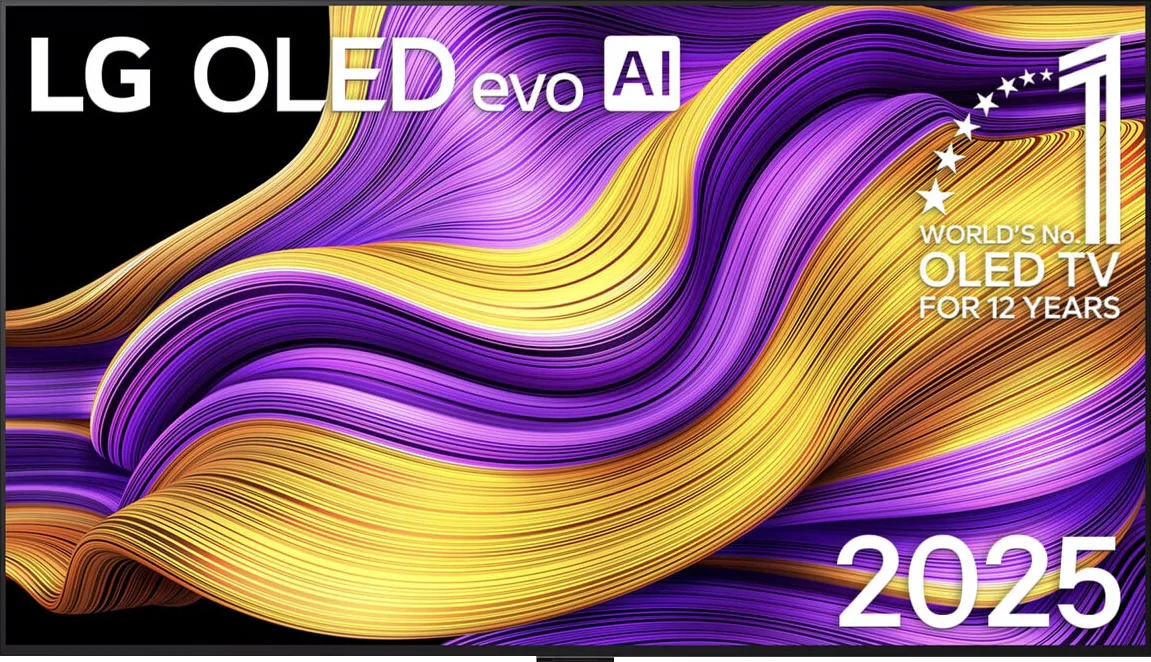
Panel type: WRGB OLED
Resolution: 3840x2160
System: Amazon FireTV
Model year: 2024
Complete the survey to find out the result

Panel type: WRGB OLED
Resolution: 3840x2160
System: WebOS
Model year: 2025
Complete the survey to find out the result

Overall rating
8.3
8.9
Movies and series in UHD quality
8.7
9.2
Classic TV, YouTube
9.0
9.2
Sports broadcasts (TV and apps)
8.9
9.0
Gaming on console
9.6
9.6
TV as a computer monitor
8.6
8.8
Watching in bright light
6.2
8.0
Utility functions
7.0
8.5
Apps
6.1
9.1
Sound quality
8.7
8.7
Complete the survey to find out what fits your preferences
Advantages
Great picture quality: Thanks to OLED technology with MLA, the image offers deep blacks and infinite contrast
Impressive HDR: Brightness of 1760 nits, support for Dolby Vision and HDR10+
Colour reproduction after calibration is truly reference-level
Excellent viewing angles
144 Hz and gaming features: Support for ALLM, VRR
Low input lag
Built-in soundbar with Dolby Atmos: Provides spatial and dynamic sound
Support for user features: Recording to USB, AirPlay, PiP and Miracast
Amazing black and contrast
Reference colour reproduction after calibration
Very high brightness in HDR materials
Excellent collaboration with consoles and computers
Great motion smoothness - OLED panel 165Hz
Many features for gamers: VRR, ALLM, HGIG, low input lag
Great operating system WebOS with many applications
Superb control thanks to the Magic remote with "pointer" function
Disadvantages
No support for DTS audio format
Worse (though still good) viewing angles than its predecessor G4
Different versions of the remote in derivative models – it's hard to predict which version we will get
Our verdict
The LG G5 is a television that not only continues but also enhances what we loved about the previous models in the G series. Instead of following the beaten path, LG opted for a new Tandem OLED panel – and it was a resounding success. Brightness? Simply, PH E N O M E N A L. HDR effect? Close to reference. Colours after calibration? Almost perfect. Motion fluidity, low latency, and features for gamers? At an absolutely top level. The G5 performs well both in films and games, day and night, with a decoder, console, PC, or even just the remote. Of course – it is not a product without flaws. It’s a shame there is no support for DTS, viewing angles have worsened compared to its predecessor, and the remote may vary depending on the version. However, when we look at the overall picture, it is hard not to feel that this is one of the best OLED televisions available on the market, and perhaps the best. Certainly, when it comes to its versatility and image quality without having to reach for the extremely expensive models of the competition. If you are looking for a television for everything – cinema, gaming, bright living rooms, watching online content or connecting a computer – the LG G5 is a device that simply delivers on every front without compromises.
TV appearance




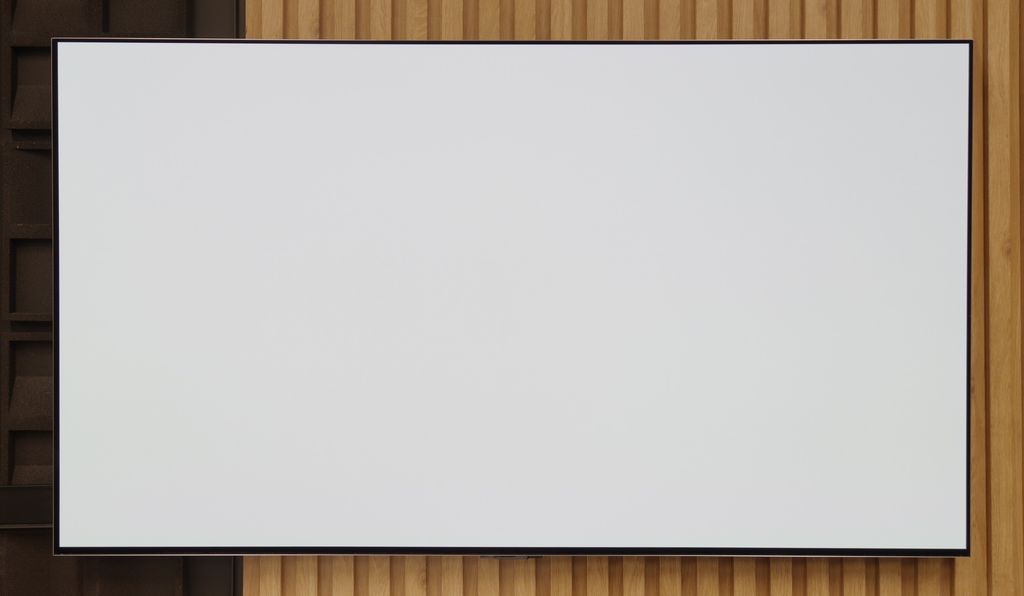
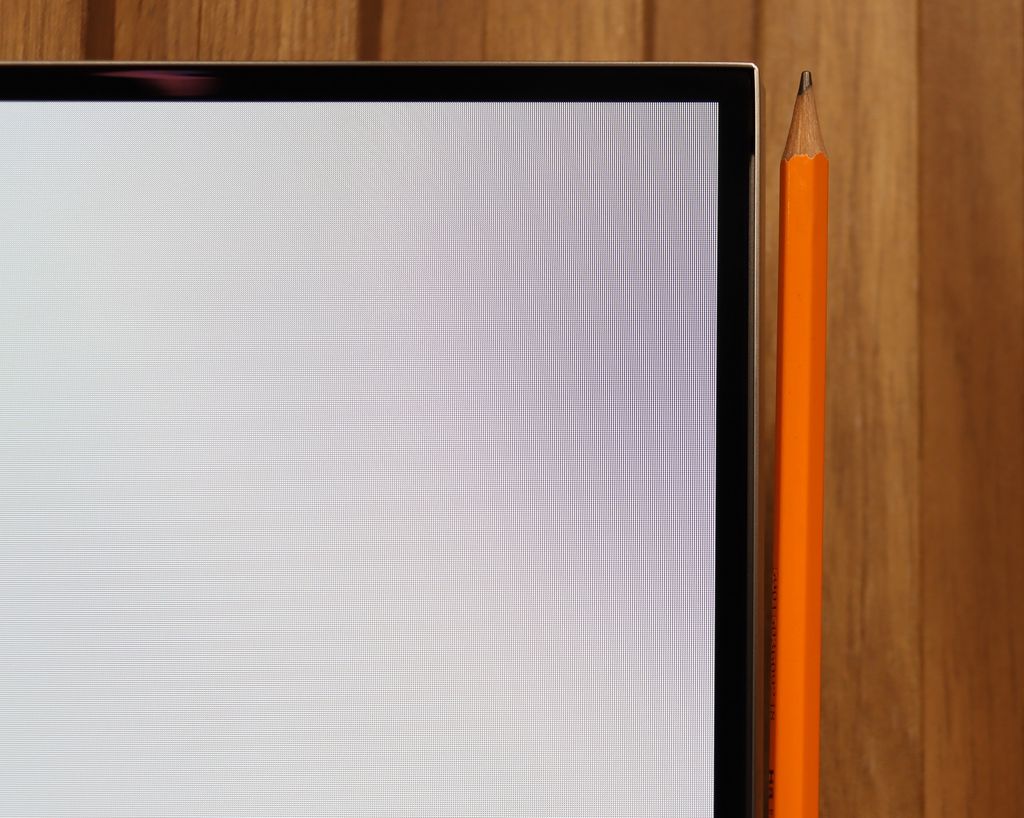
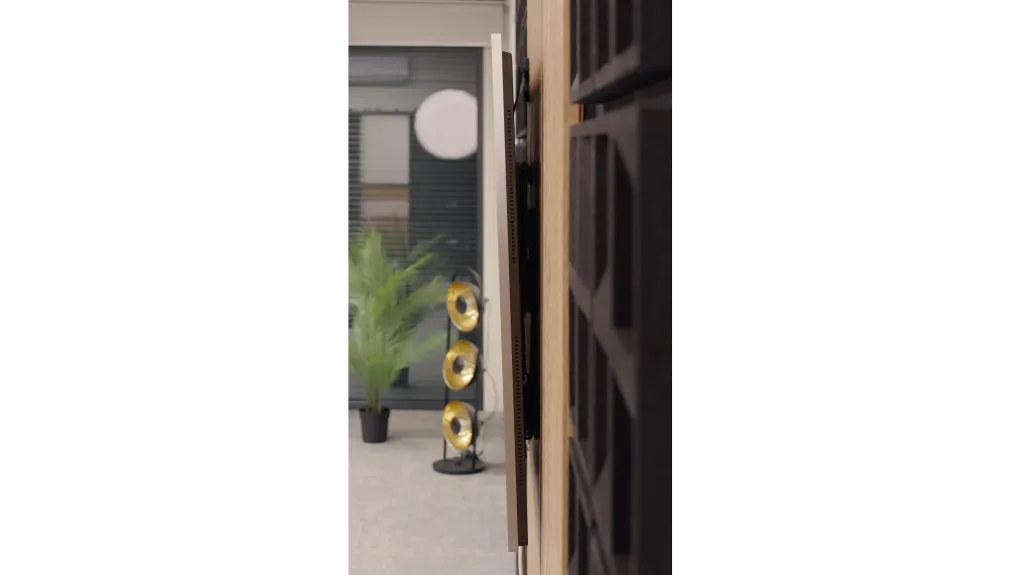
Contrast and black detail
10/10
10/10
Contrast:

Result
∞:1

Result
∞:1

Result
∞:1

Result
∞:1

Result
∞:1

Result
∞:1

Result
∞:1

Result
∞:1

Result
∞:1

Result
∞:1
Halo effect and black detail visibility:

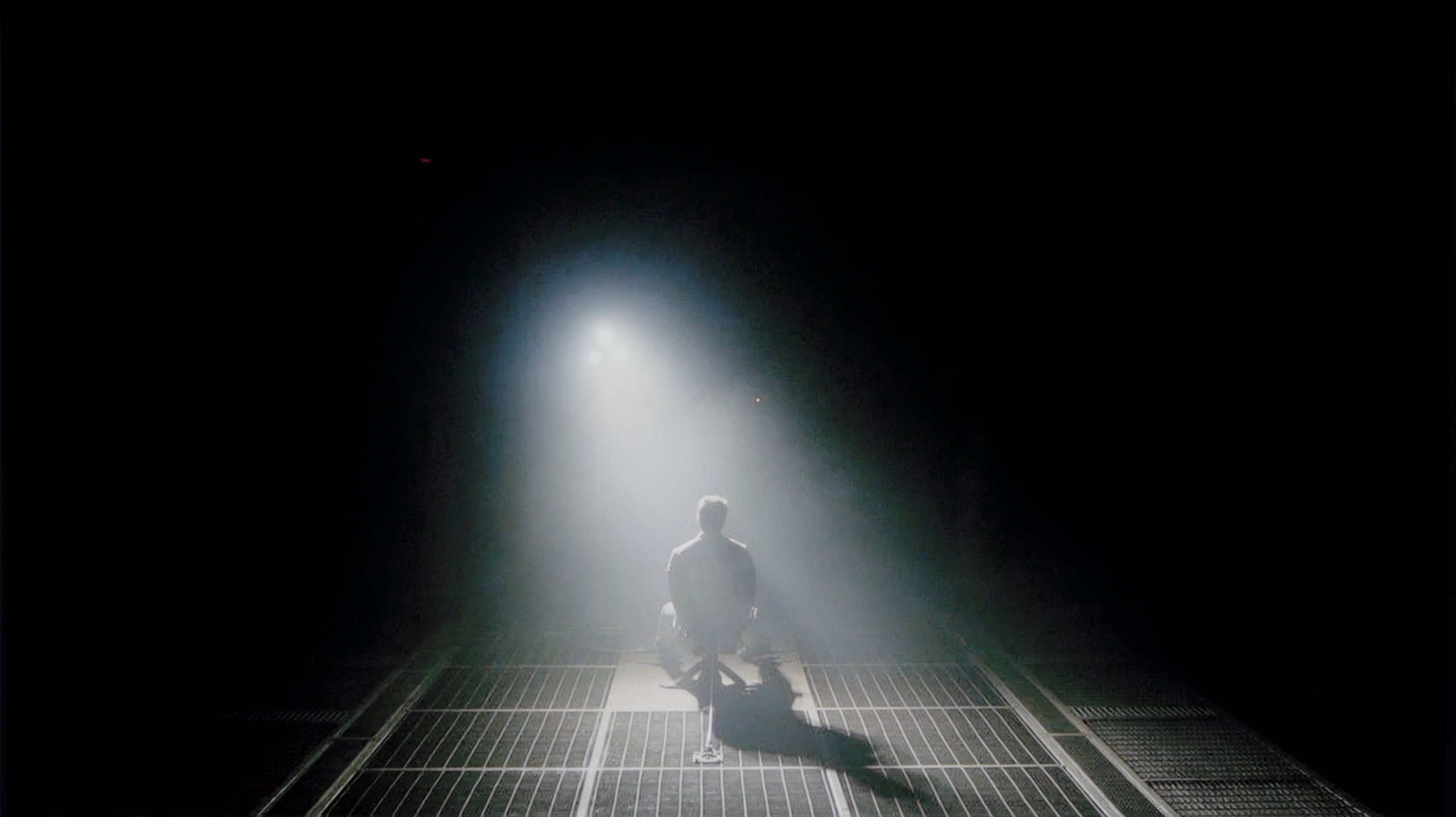
The contrast and black levels in the Panasonic Z95A television are at a level that captures the attention of even the most discerning viewers. The Z95A, as befits an OLED, delivers remarkable results in this area. In every tested scene, the contrast is practically infinite, translating into excellent image quality in real-world conditions. During the screening of the film Oblivion, one can see how light sources, such as lamps, fall on the actor, creating an incredibly realistic effect. The Z95A Panasonic reproduces these black details with impressive precision, making even subtle differences in brightness and lighting stand out clearly. As a result, viewers experience a sense of depth and naturalness in the image that is hard to find in LED televisions, which often offer various types of compromises.
LG G5, as befits an OLED television, impresses with its quality of contrast and blackness. In scenes with a lot of dark areas, the screen looks almost perfect, offering deep, absolute black and infinite contrast – an effect that still cannot be achieved on any LCD television. The new Tandem OLED panel does not introduce any negative changes compared to previous generations – blacks are flawless regardless of the content. Watching scenes from films like The Revenant or Oblivion, the excellent separation of lights is clearly visible, without any halo effect or brightening of dark areas. In this category, the LG G5 deserves the highest rating.
HDR effect quality
8.3/10
9.1/10
Luminance measurements in HDR:

Result
1667 nit

Result
1738 nit

Result
1792 nit

Result
1798 nit

Result
999 nit

Result
2346 nit

Result
2353 nit

Result
2399 nit

Result
2353 nit

Result
2012 nit
Scene from the movie “Pan” (about 2800 nits)


Scene from the movie “Billy Lynn” (about 1100 nits)


Static HDR10


Dynamic: Dolby Vision
Dynamic: Dolby Vision


HDR luminance chart:
LG OLED G5
HDR luminance
Luminance of RGB colors
Panasonic Z95A
HDR luminance
Luminance of RGB colors
Panasonic Z95A showcases class when it comes to HDR performance. In luminance tests, it achieves a level of 1800 nits, which has a real impact on movie watching. Scenes from Life of Pi or Gemini Man look fantastic – the television effortlessly renders details and intensity of bright spots, impressing with its power. In more demanding moments, like the final scene from The Meg, one can see how bright light floods the screen. In such moments, brightness drops, which is typical for organic matrices. Nevertheless, a result around 1000 nits can still be considered excellent, still providing very good image quality. Additionally, the television offers excellent coverage of wide colour palettes – as much as 98.6% for DCI-P3 and 74.5% for BT.2020. Thanks to this, colours are not only vivid but also deeply saturated, allowing for a full appreciation of the richness of details, especially in HDR scenes. Such coverage makes the hues look more realistic, and the HDR effect gains in intensity and accuracy. All this impressive HDR effect is thanks to MLA technology, which enables achieving such high luminance and excellent image detail. Because of this, the Panasonic Z95A offers HDR at a level that truly makes a difference.
LG G5 with the new Tandem OLED matrix brings the biggest change in terms of the brightness of the television. And it's substantial. This is truly an astronomically bright OLED. In every scene tested – whether it was point lights or full-screen whites from the film The Meg – the brightness on the G5 exceeded 2000 nits. Just a year ago, such values on an OLED were simply unimaginable. And here we are – the G5 is approaching, and at times even surpassing, the best Mini-LEDs on the market. A new feature of the Tandem OLED matrix is also the expanded colour gamut – and here the LG G5 performs almost perfectly. DCI-P3 reaches a full 100%, and BT.2020 is maintained at around 83%. These are some of the highest values currently available on the market – it's hard to find any other television that comes close to such results, unless we are talking about the best displays with QD-OLED panels. The G5 has nearly reference-quality HDR – both in terms of brightness and colour saturation. This is an OLED that can truly shine – and not just figuratively.
Factory color reproduction
8.3/10
7.8/10


Factory Mode
After calibration


Factory Mode
After calibration
The best picture mode on the Panasonic Z95A is undoubtedly the Filmmaker mode. It offers quite a good image reproduction, but it is not free from certain issues that require improvement. Firstly, the white balance, for both 4K and HD content, tends to have a dominance of red and blue hues. This causes a slight pinkish tint to the image, particularly noticeable in bright, white scenes. Such deviations can be seen in the comparative photo below, which illustrates this issue well. The Colour Checker test also confirms these discrepancies, showing slight shifts in the dots towards the mentioned shades.
In terms of gamma brightness characteristics, it performs very well, with only minor problems when brightening small details. A greater challenge is posed by the EOTF curve, which is responsible for controlling brightness in 4K HDR content. Here, there is a slight boost in brightness above the reference value, which sometimes makes the image too bright, especially in more demanding scenes. Although the Filmmaker mode is definitely the best choice on the Z95A, these aspects require refinement to fully utilise the television's potential.
Our test unit, the LG G5, struggled with certain issues in the factory Filmmaker mode. And although most people might have found the picture acceptable, we knew that this television was capable of much more. This mode had a clear excess of blue tint in the white balance, resulting in a significantly cooled image – particularly in HDR modes, where there was additionally a lack of red. The picture appeared cold, and its sharpness was artificially boosted and unnatural. Another significant issue was the brightness characteristics. In SDR content, the situation wasn't the worst, aside from a slight dimming of the entire image. However, it performed much worse in HDR materials – due to improper brightness management, the smallest details could completely disappear from the image, while larger, bright elements looked overexposed and lacking in gradation. Fortunately, the G5 supports calibration using 3D LUT (a tool for professionals for colour calibration), so we decided to make use of its professional capabilities and see what it could really do. Because although it wasn't tragic even before calibration, the potential of this television definitely deserved more.
Color reproduction after calibration
9.4/10
9.8/10




After calibration, Panasonic Z95A shows its full potential, offering an almost perfect picture. The television provides immense adjustment capabilities, which we have fully utilised. The white balance after calibration is positively perfect, and errors in SDR content at the level of 0.5 place it in an absolutely reference standard. The same is true for 4K HDR content – the screen tint has been completely eliminated, and the white balance is now exemplary.
The colour palette and Colour Checker test confirm the excellence of the calibration. Errors below 2 are a result that will satisfy both professional calibrators and enthusiasts of cinematic picture quality. Significant changes have also occurred in the brightness characteristic – the EOTF curve has been flattened, eliminating previous issues with excessive brightness. And a small gamma error has been reduced.
Before calibration, the picture was decent, but now it's an entirely different league. It's a real feast for the eyes, the quality of which is hard to compare to anything else. Panasonic Z95A, after fine-tuning the settings, becomes a true master of colour reproduction.
After performing the calibration process using professional tools, we can confidently state that the LG G5 offers nearly reference-quality image. Most of the errors related to white balance and the ColorChecker test are below a value of 2, which is a phenomenal result, practically imperceptible to the human eye. And while one could still nitpick that in HDR films the television still has a tendency to slightly dim the smallest elements of the image, in practice this does not negatively affect the overall impression. Kudos to LG, as once again they provide the user with enormous possibilities for adjusting their display – and this, combined with the very good parameters of the panel itself, results in an image that is truly hard to beat.
Smoothness of tonal transitions
6.5/10
8.5/10












The tonal transitions in Panasonic Z95A are not disastrous, but in this class of devices, one can expect more. The television struggles with smoothly blending colours, both in dark and light shades. In more demanding scenes, minor imperfections are visible, which can affect the visual experience, particularly for more discerning users. While this is not a disqualifying factor, it is an aspect that needs improvement, especially considering the price and ambitions of this model.
The fluidity of tonal transitions in the LG G5 is a notable step forward compared to last year's model. Not only has brightness been improved, but also the method of blending colours, which the G4 sometimes struggled with. In the vast majority of scenes, the G5 has no issues with tonal transitions – there is no visible banding typical of WOLED technology, nor are there unsightly breaks between colours. Of course, in very dark areas of the image and with shades of grey, minor imperfections can still be noticed, but these are things that the average viewer would not even register. In short – it is really good.
Image scaling and smoothness of tonal transitions
7.4/10
8.7/10
Smooth transition function

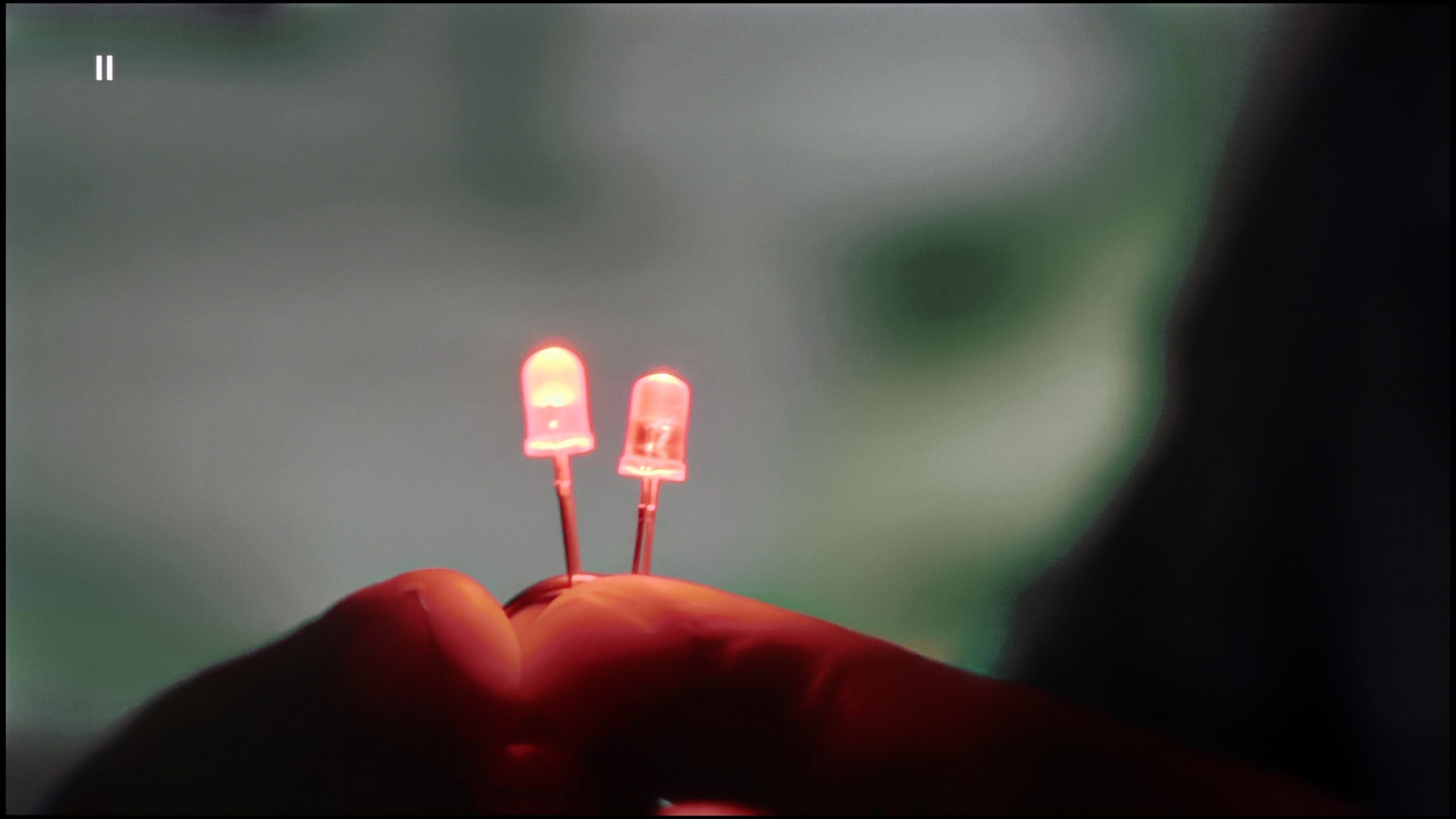
Image without overscan on the SD signal


In the case of lower quality materials, the function "Gradation Smoothing" is responsible for smoothing tonal transitions. The best results are achieved with an intermediate setting – although they are not spectacular, the function works correctly and does not introduce unwanted effects into the image. It can be rated as average, but sufficient to improve the quality of tonal transitions.
As for digital processing, or upscaling, the image looks surprisingly good. It is vivid and pleasant to the eye, which makes lower quality content, such as standard television or YouTube, look quite decent. However, minor issues can be noted, such as "jagged" edges, for example, branches in the background. Nevertheless, this does not significantly affect the overall viewing experience, and the television handles these materials in an acceptable manner.
Upscaling and digital image processing in the LG G5 are quite impressive. The television handles lower quality content very well, especially when the "Smooth Gradation" feature is set to a low level. In this mode, it effectively removes unwanted artifacts and issues with visible tonal transitions. It may also slightly smooth out some desirable details, such as the subtle texture of clothing or skin, but importantly – it does not remove film grain, so it's difficult to speak of a serious compromise here. This is one of those options that is definitely worth enabling.
The G5 also performs well with upscaling, which improves the quality of older materials. The test image with the model looked really solid – slight jaggedness was visible, but that's an effect that cannot be completely avoided. Additionally, there were no problems with overscan, which – contrary to appearances – is not at all obvious, even in 2025.
Blur and motion smoothness
8.5/10
9/10

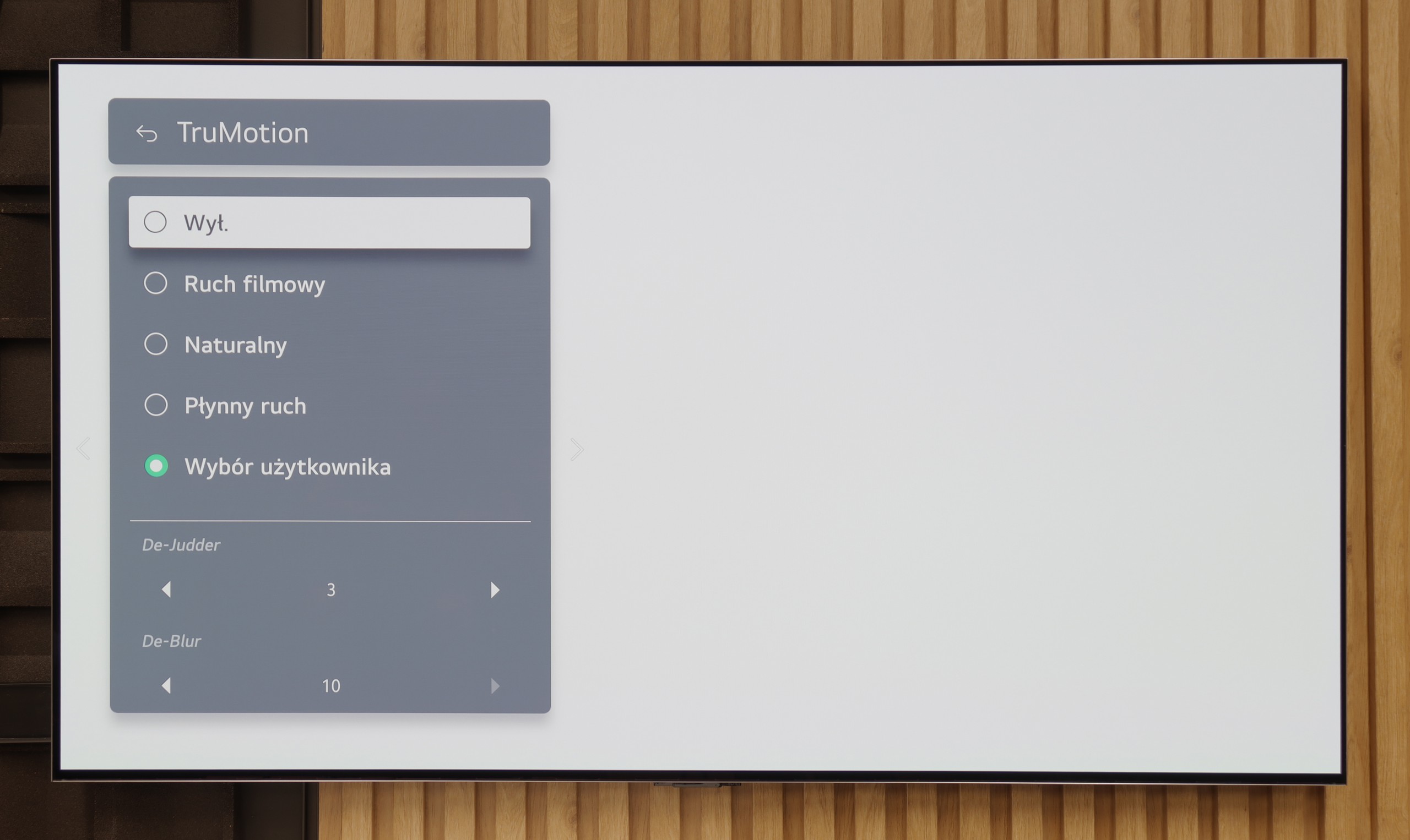
Blur (native resolution, maximum refresh rate):






Blur (BFI function enabled):
Image flickers in this mode



Image flickers in this mode



Smużenie ():
Smużenie (4K 165Hz):



Panasonic Z95A, thanks to its 144 Hz panel, offers excellent image fluidity. For films, there is an "Intelligent Frame Creation" feature that enhances fluidity and reduces motion blur. The user has two sliders at their disposal: "Motion Blur Reduction" – responsible for clearer and sharper details in rapidly moving scenes. "Film Smoothness" – adds fluidity by creating additional frames between the originals, making motion appear smoother and more natural with a "soap opera" effect.
Thanks to this, viewers can adjust the settings to their own preferences. Films and less dynamic material look smooth and natural, which should satisfy most users.
The motion smoothness on the LG G5 is simply phenomenal. The television is equipped with a 165 Hz refresh rate panel, and this, combined with the instant response time of the OLED matrix, delivers incredible results. The image does not tear or stutter like on traditional LCD televisions. Like most LG models, the G5 is equipped with a motion smoother, which can be useful when watching films – we are, of course, referring to the TruMotion mode. With the "De-Blur" and "De-Judder" sliders, we can adjust the smoothness of older materials according to our own preferences, whether we want to maintain the characteristic film stuttering or lean towards a more fluid, television-like effect.
Console compatibility and gaming features
10/10
10/10
- ALLM
- VRR
- VRR range40 - 144Hz40 - 165Hz
- Dolby Vision Game Mode
- Correct implementation of HGIG
- 1080p@120Hz
- 1440p@120Hz
- 4K@120Hz
- Game bar

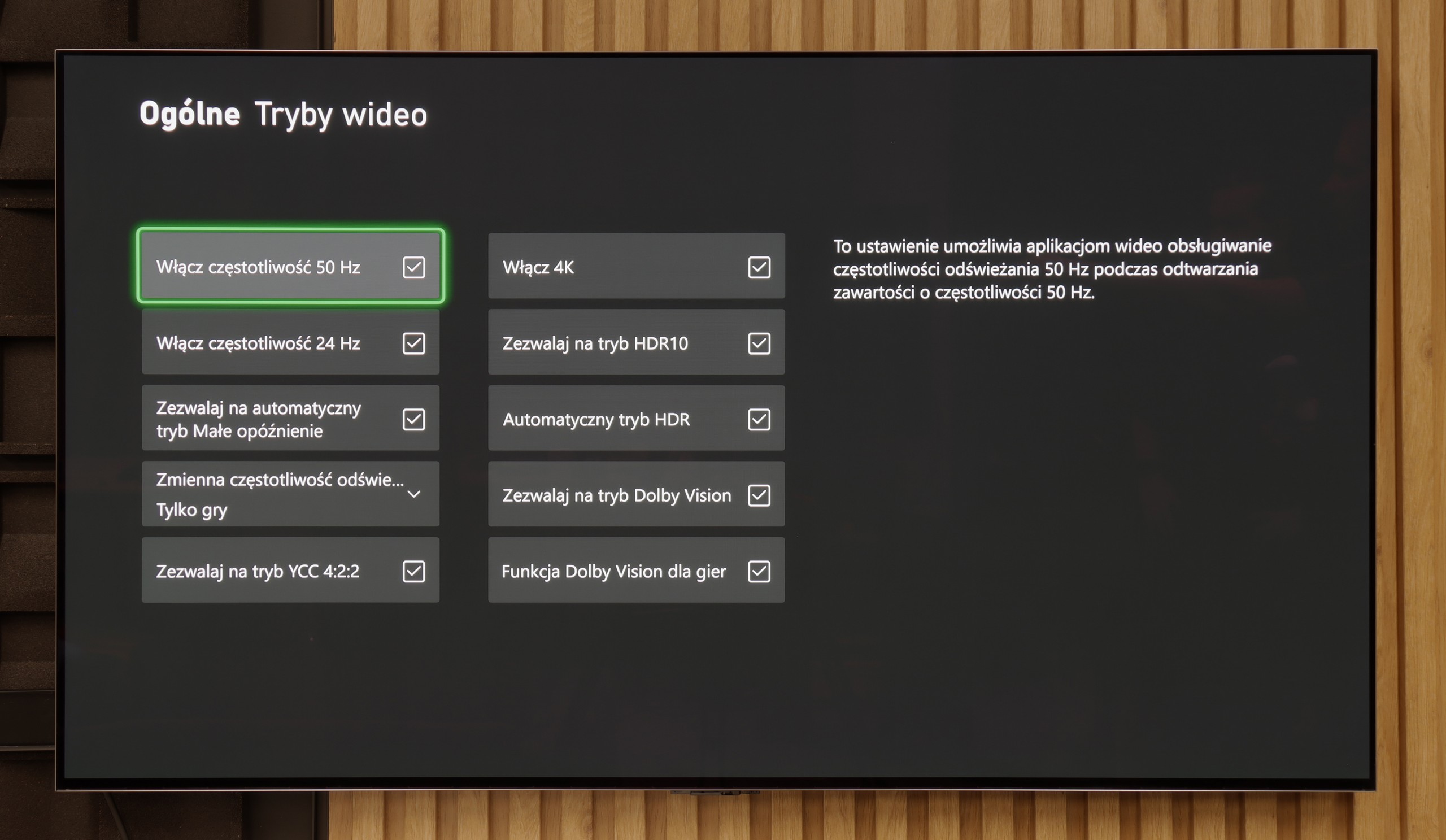

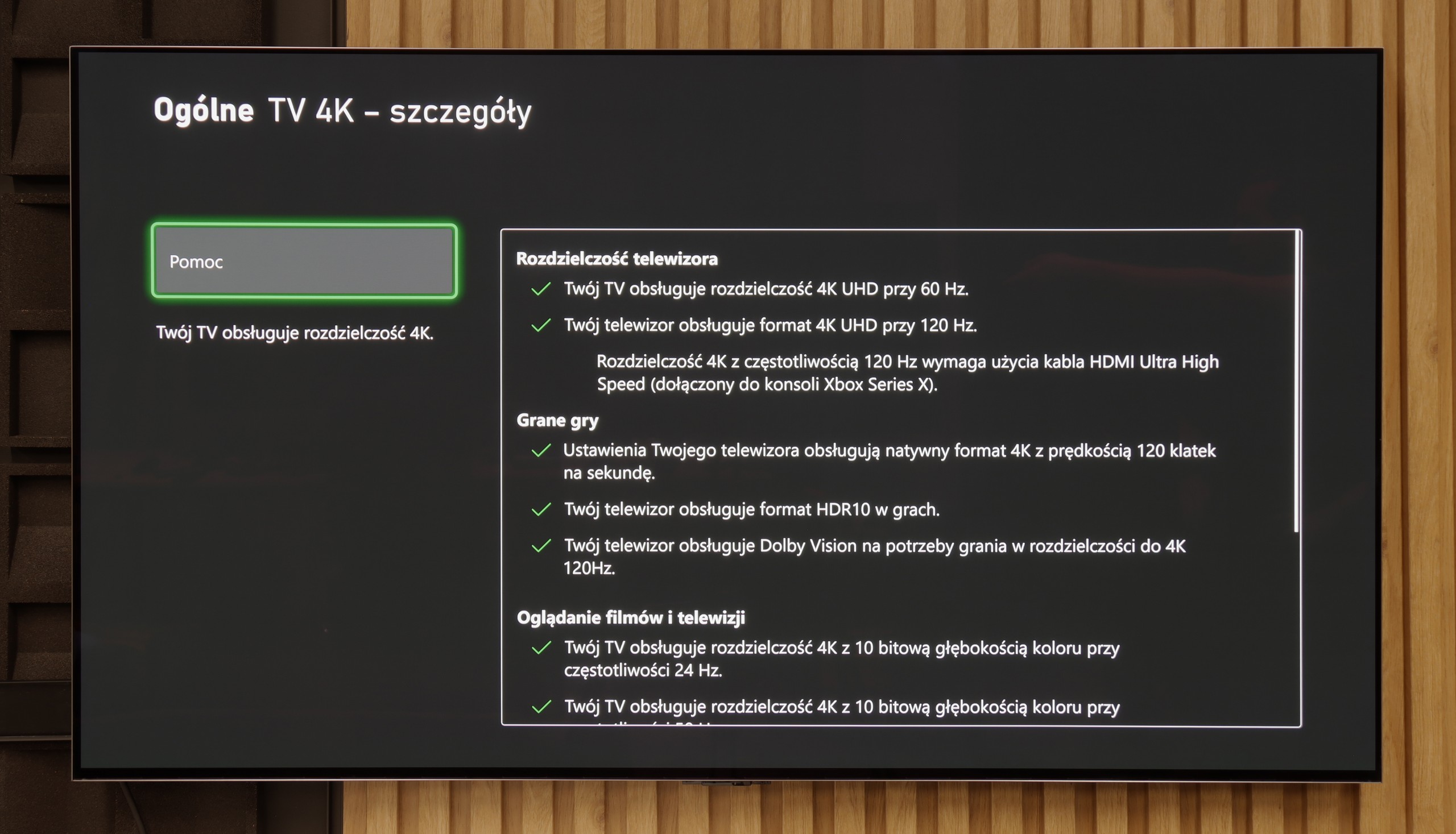

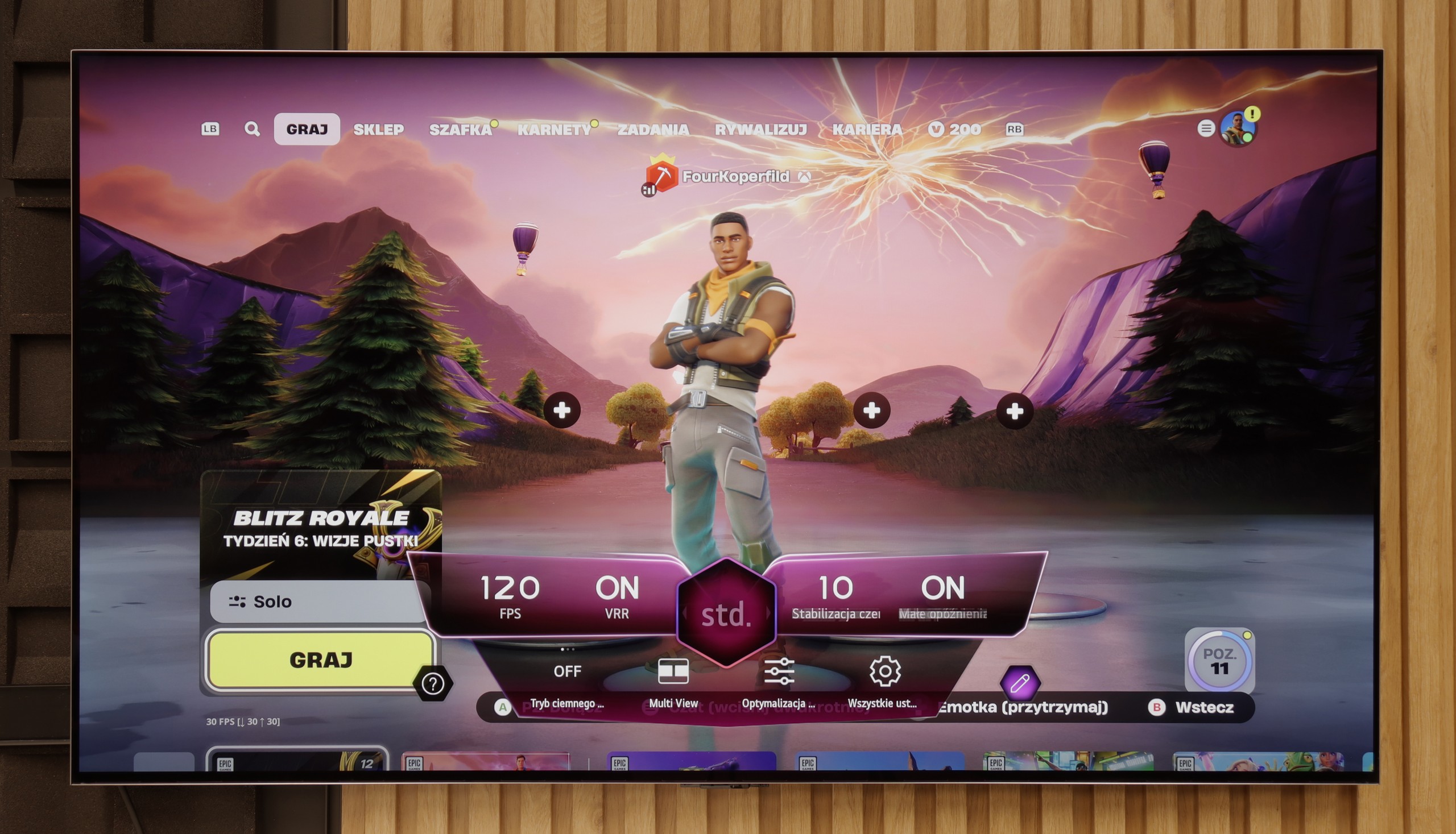

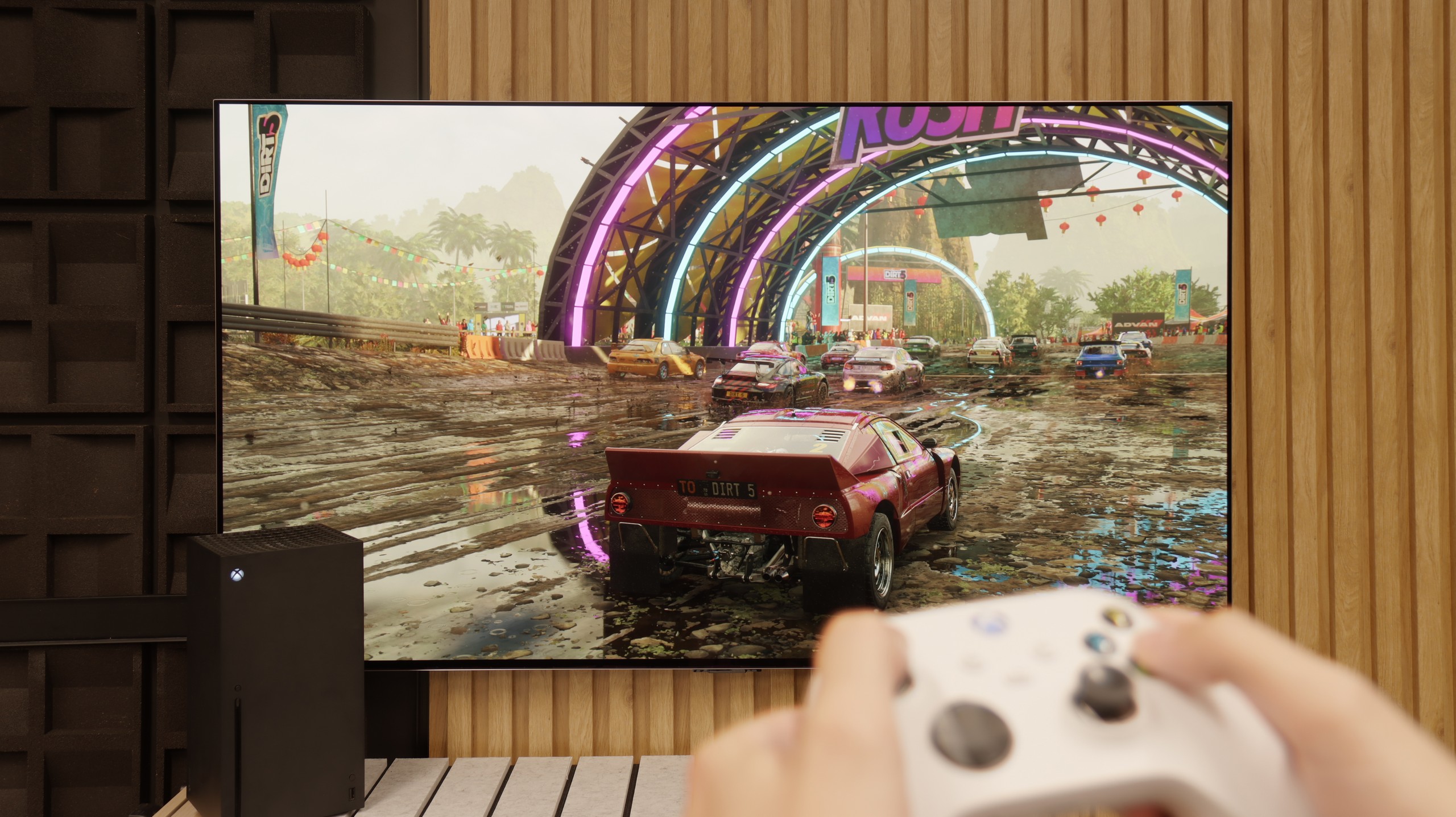
Panasonic Z95A this year shows that the manufacturer has made a huge leap forward in terms of support for gamers. The television offers virtually everything one could expect from a device in this bracket. Support for ALLM (automatic low latency mode) and VRR (variable refresh rate) ensures smoothness and eliminates tearing in dynamic games. The 144 Hz panel allows for incredible fluidity, and additional support for resolutions other than 4K provides greater flexibility, which is a significant advantage for gamers using various configurations.
A unique and quite specific feature is the "Game Bar." Its ball-shaped interface stands out from the competition and allows for quick adjustments of key settings such as VRR, brightness level, or picture mode, without having to interrupt gameplay.
However, in this class of device, there is a minor disappointment – the Panasonic Z95A offers only two HDMI 2.1 ports, instead of four. This is definitely too few for a premium television, especially at a time when many people own more than one device requiring full HDMI 2.1 support, such as a next-gen console or an advanced computer. In this category, it's hard to accept this limitation, especially given the high aspirations of this model. Nevertheless, the television is an excellent choice for gamers, offering versatility and functionality at the highest level.
Features for gamers? Perfect. That should be sufficient for you to know what level we are dealing with here. The G5 is a television designed with gamers in mind, so we will find literally everything you could expect from a gaming screen. There is a Game Bar, there is support for high resolutions with high refresh rates – that is, 4K at 120 Hz, and even more, as the panel has a refresh rate of 165 Hz (which PC gamers will benefit from). The television supports variable refresh rate (VRR), automatic low latency mode (ALLM), and also correctly handles HDR in games thanks to the HGiG function. All of this adds up to one of the best sets of gaming features available on the market. Well done, LG.
Input lag
10/10
9.9/10
SDR
HDR
Dolby Vision
Panasonic Z95A delights with an exceptional level of input lag, making it one of the best choices for gamers in its class. Regardless of the mode, the television achieves results of around 13 ms at 60 Hz and just 5 ms at 120 Hz, ensuring incredibly smooth and responsive gameplay. Moreover, Panasonic allows playing in Dolby Vision mode with minimal delays. Well done!
The input lag on the LG G5 is incredibly low. The reaction time to our actions – whether we're playing with a controller, keyboard, or mouse – is almost perfect. The controls are instantaneous, and the game responds exactly when we expect it to. The Dolby Vision Gaming mode does introduce slightly higher latencies, but even then it's hard to nitpick – in the worst case, the values hover around 20 ms, which for most gamers will be practically unnoticeable.
Compatibility with PC
8.6/10
8.8/10

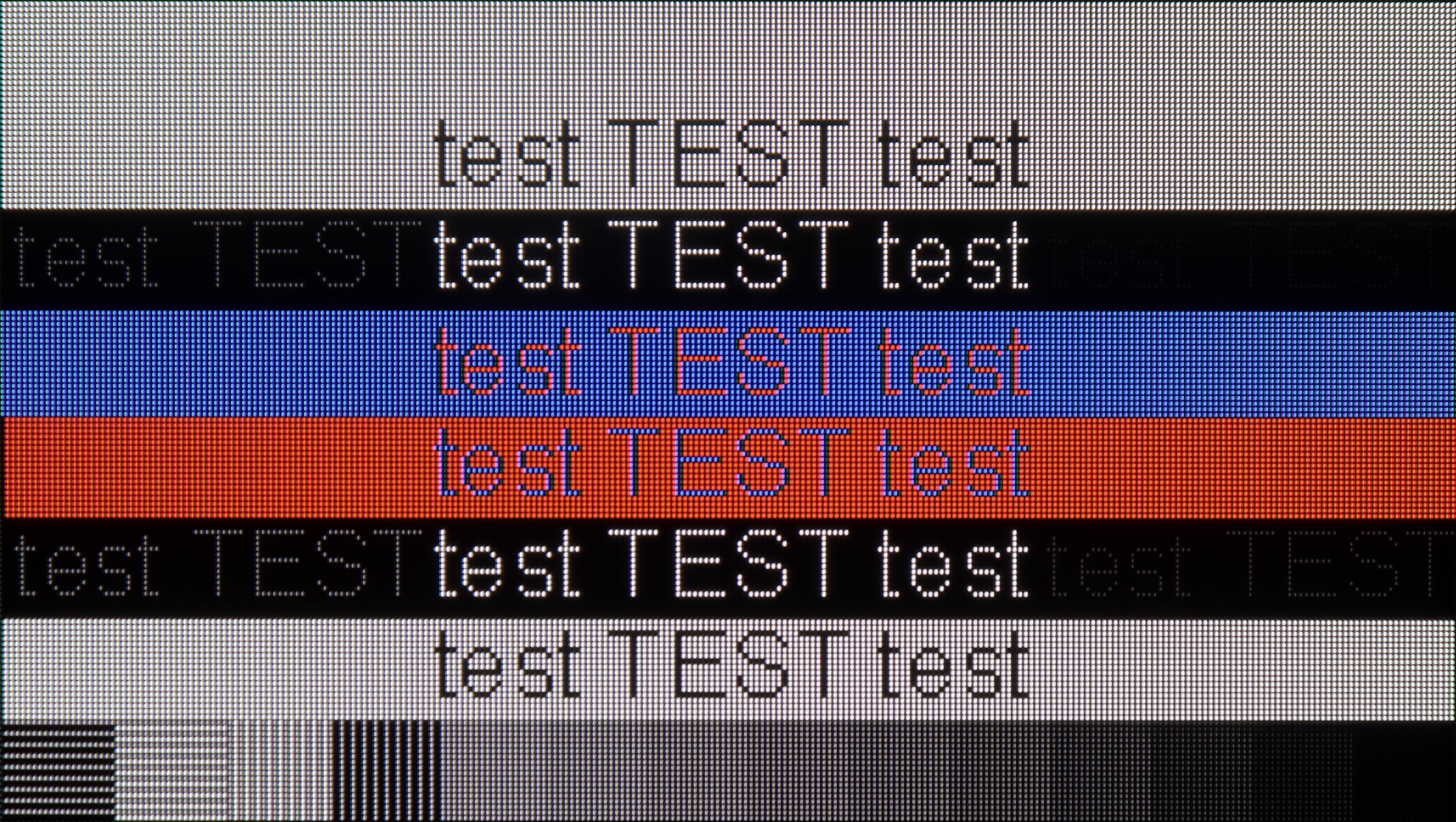
Panasonic Z95A works excellently with computers, offering full chroma 4:4:4 support, which translates to very good font readability. However, one should bear in mind the characteristic way of displaying text of WOLED matrices with a white subpixel, which may be noticeable during prolonged work with documents or browsing websites. This is something worth considering if the television is to be used as a work monitor.
Additionally, the support for G-Sync technology is a plus, which is a great addition for gamers using NVIDIA graphics cards. This means that the Z95A provides smooth gameplay without tearing and delays, making it a versatile device for both work and play.
Collaboration with a PC? Nearly perfect. The television, as we mentioned earlier, has fantastic features for gamers – including those using a PC. Onboard, we find full G-Sync certification, a 165 Hz panel, and a super-fast input lag of around 5 ms. Thanks to the correct implementation of chroma 4:4:4, fonts are very easy to read – both the smallest and the largest. Although due to the WRGB subpixel layout, there may be slight shadows around the characters, for most users this effect will be virtually unnoticeable. The G5 excels as a screen for work, entertainment, and gaming – also from a computer.
Viewing angles
9.7/10
7.5/10
The viewing angles on the Panasonic Z95A are excellent, thanks to the use of an OLED panel with MLA technology. This ensures that the picture remains clear, full of detail, and without visible colour shifts even at large angles. In practice, this means that regardless of where we are watching the television from, the picture quality remains at the highest level.
In this respect, the Z95A ranks among the very best, competing for the title of leader with televisions based on QD-OLED panels (Samsung and Sony). It is difficult to find anything better on the market, making this model an ideal choice for larger rooms or screenings with family and friends, where everyone can enjoy a perfect picture.
The viewing angles on the LG G5 are very good, mainly due to the use of a WOLED panel. It's hard to find fault here – the image does not significantly lose brightness or quality even when viewed from the side. However, it should be fairly noted that there is a slight regression compared to the G4 model. The predecessor used an MLA panel with micro-lenses, which offered slightly better light distribution. Also, compared to QD-OLED panels, the angles are worse. Nevertheless, the overall perception of the image at an angle remains very good and should not be an issue in everyday use.
TV efficiency during daytime
6.2/10
8/10

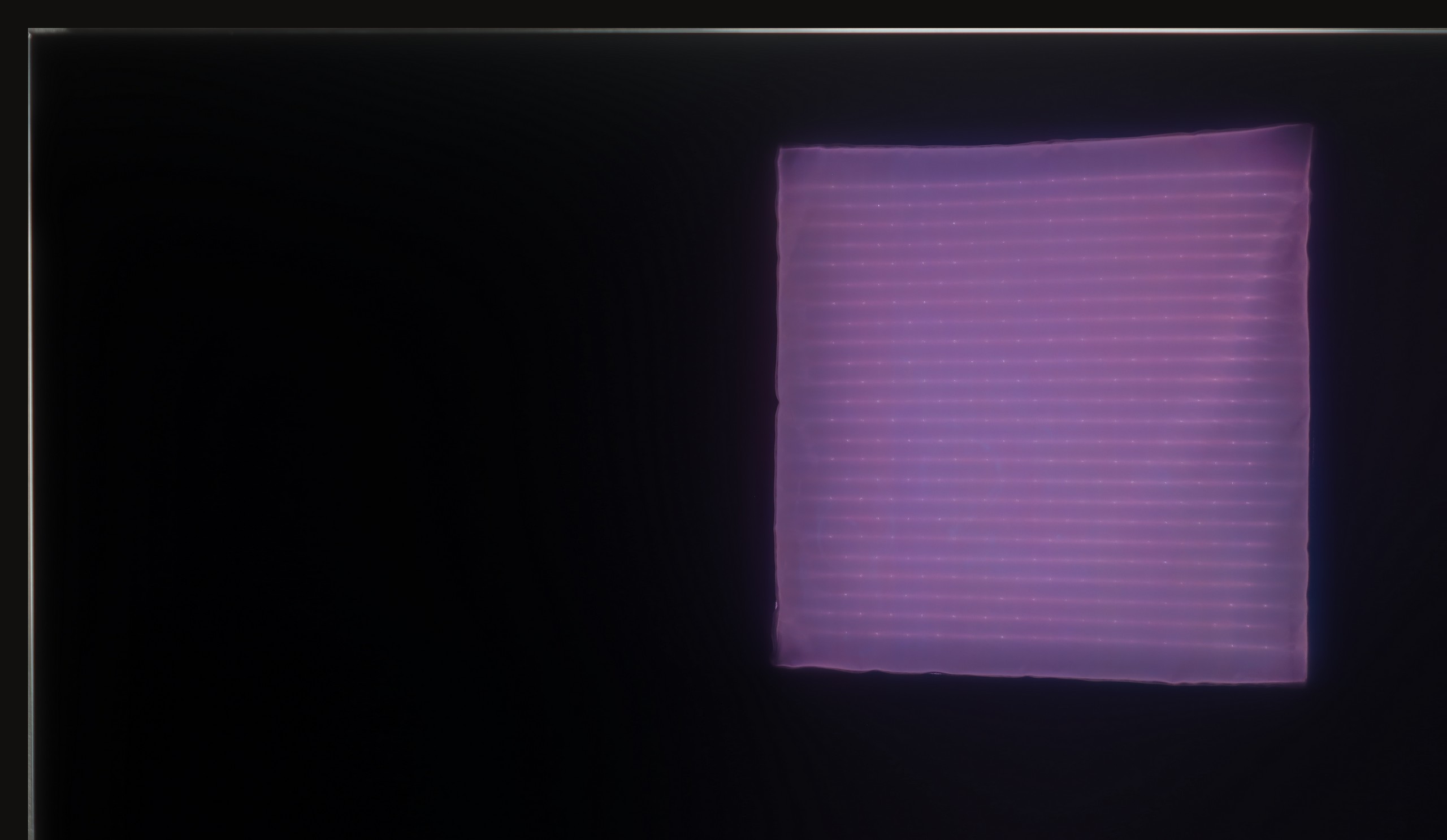


Matrix brightness
Average luminance SDR
LG OLED G5: 810 cd/m2
Panasonic Z95A: 493 cd/m2
Panasonic Z95A is equipped with a glossy panel that manages to reduce reflections quite well. However, due to the use of micro lens array (MLA) technology, blacks in bright environments may take on a slightly cherry hue, which is particularly noticeable in brightly lit rooms. In terms of brightness, the average SDR value is around 500 cd/m², which comfortably allows for enjoyable viewing of the television in most living rooms. However, it should be taken into account that in very sunny conditions or with intense artificial lighting, this brightness may prove insufficient to fully eliminate reflections and maintain perfect contrast. Nonetheless, in typical home conditions, Z95A performs very well.
The LG G5, thanks to its very high brightness, performs excellently in bright rooms. Even with SDR content, the average brightness value is around 800 nits, which is significantly more than in standard televisions. It will handle a bright living room with ease. Although the panel averages moderate reflection suppression, it still maintains significantly better blacks and colours during the day than QD-OLED panels or those with a matte finish. The G5 will perform well in very sunny rooms – unless you truly cannot stand reflections on the screen. In that case, you will need to use blinds or consider purchasing a television with a matte panel.
Details about the matrix
Subpixel Structure:

Panel uniformity and thermal imaging:


TV features
7/10
8.5/10
- HDMI inputs2 x HDMI 2.0, 2 x HDMI 2.1 48Gbps0 x HDMI 2.0, 4 x HDMI 2.1 48Gbps
- Other inputsIR (remote)
- OutputsToslink (Optical audio), eARC (HDMI), ARC (HDMI)Toslink (Optical audio), eARC (HDMI), ARC (HDMI)
- Network InterfacesWi-Fi 2.4GHz, Wi-Fi 5GHz, Ethernet (LAN) 100MbpsWi-Fi 2.4GHz, Wi-Fi 5GHz, Ethernet (LAN) 100Mbps
- TV receptionDVB-T, DVB-T2, DVB-S, DVB-S2, DVB-CDVB-T, DVB-T2, DVB-S, DVB-S2, DVB-C
Classic features:
- Recording to USB (terrestrial TV)
- Recording programming
- Picture in Picture (PiP)
- RF remote control (no need to aim at the screen)
- Backlit remote control
- Teletext
- Audio only mode
- Bluetooth headphones support
- Simultaneous Bluetooth headphones & TV audio
Smart features:
- AirPlay
- Screen mirroring (Windows Miracast)
- Voice search
- Voice search in native language
- Ability to connect a keyboard and mouse


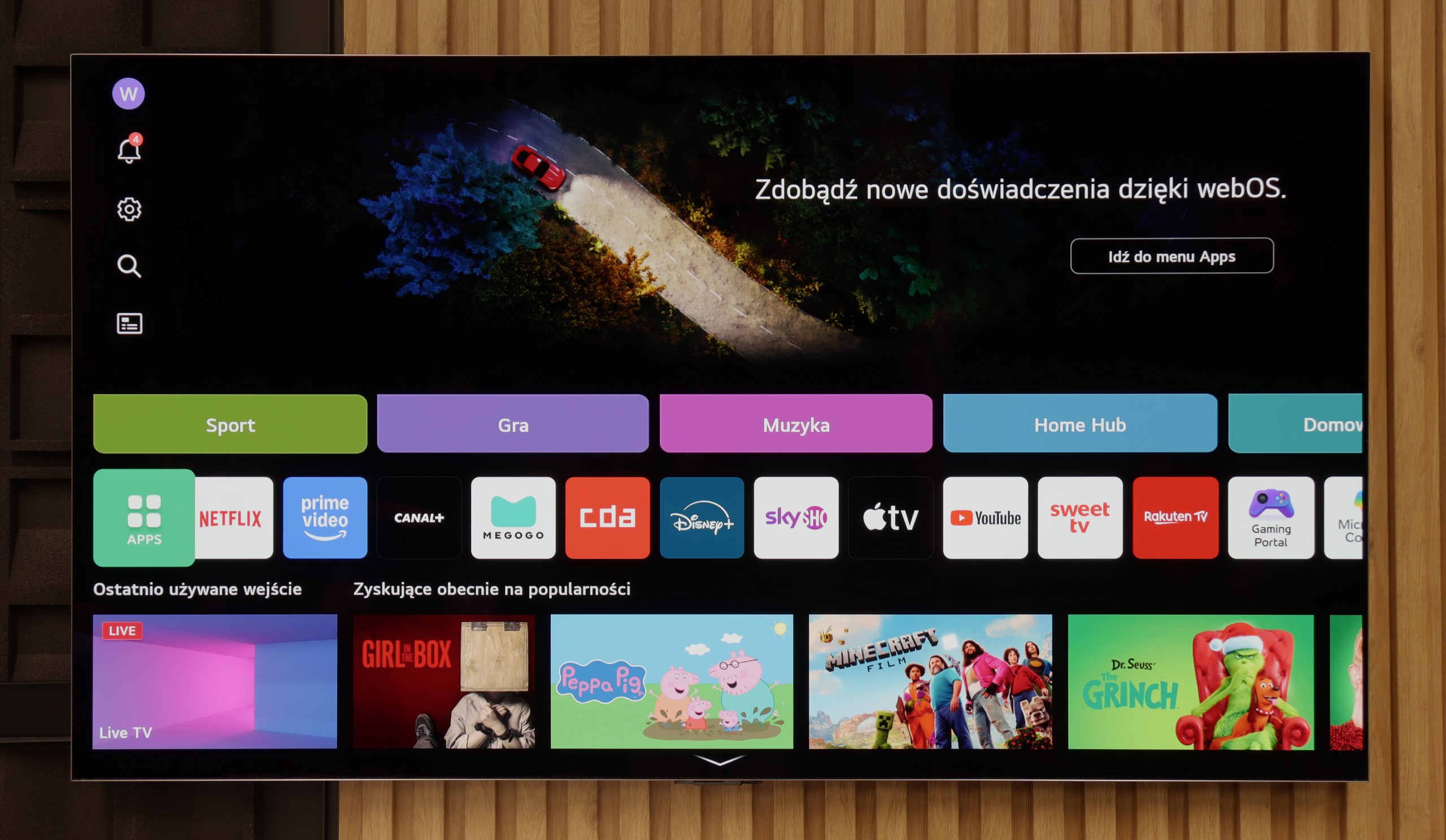
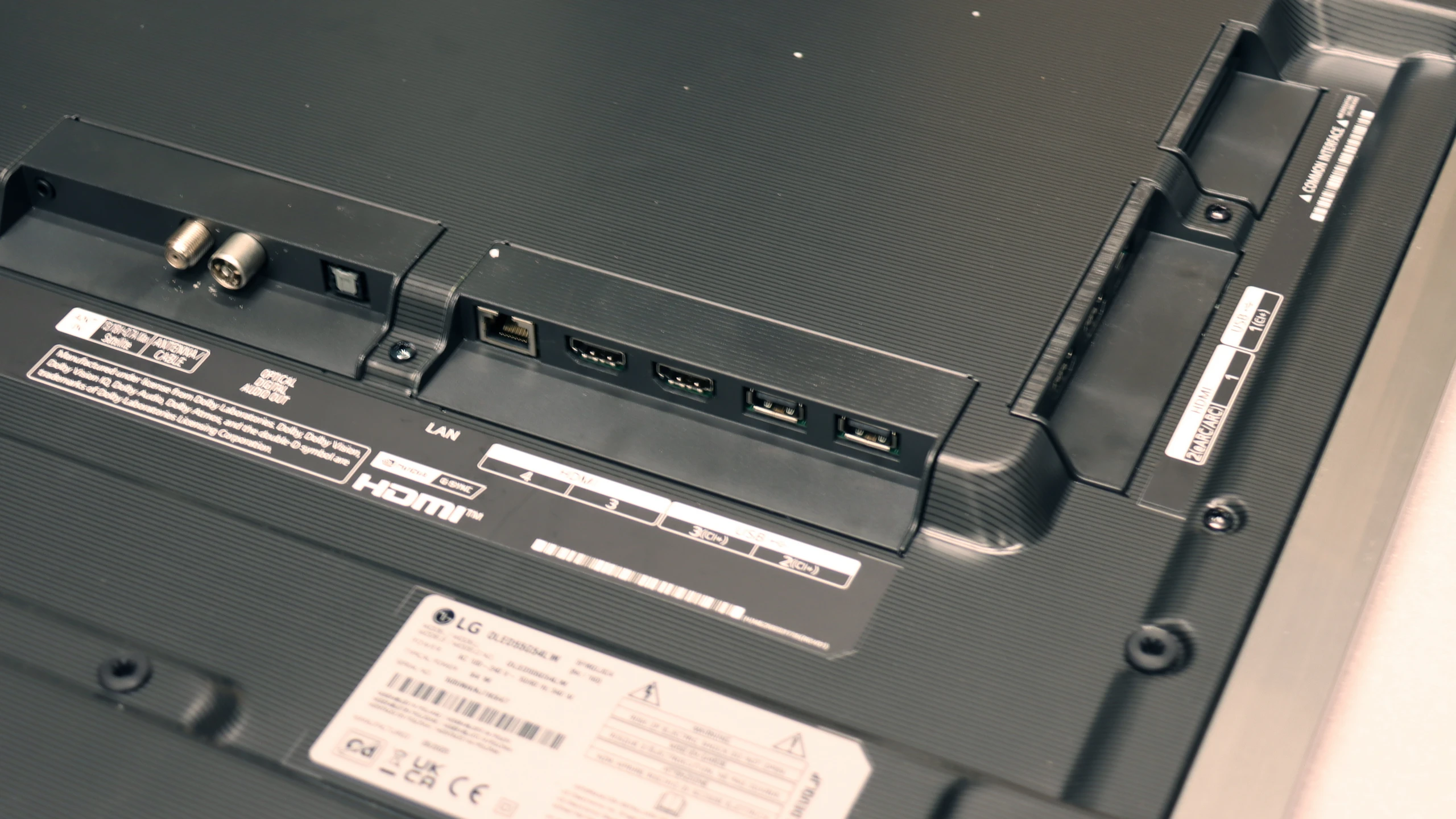
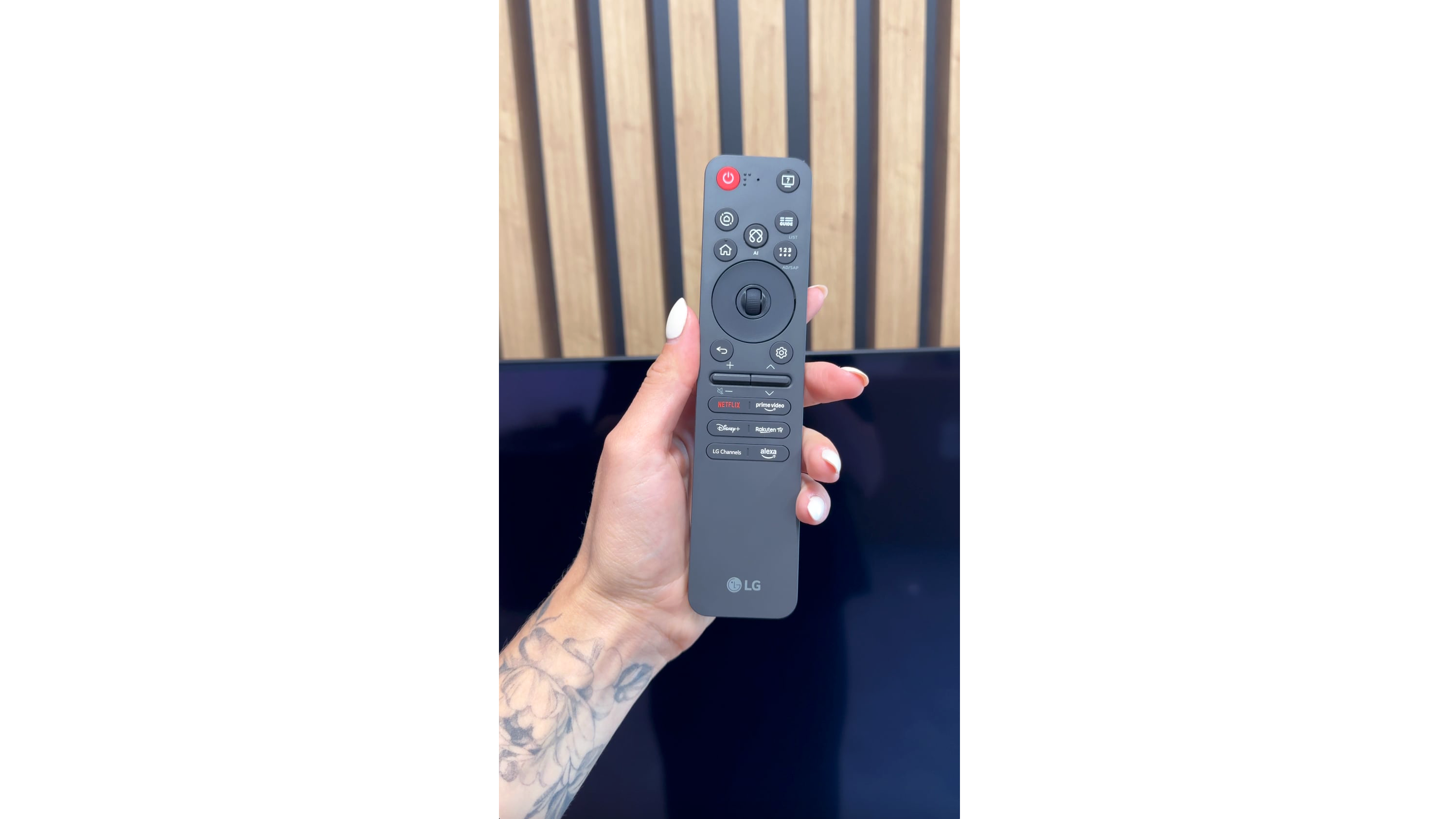
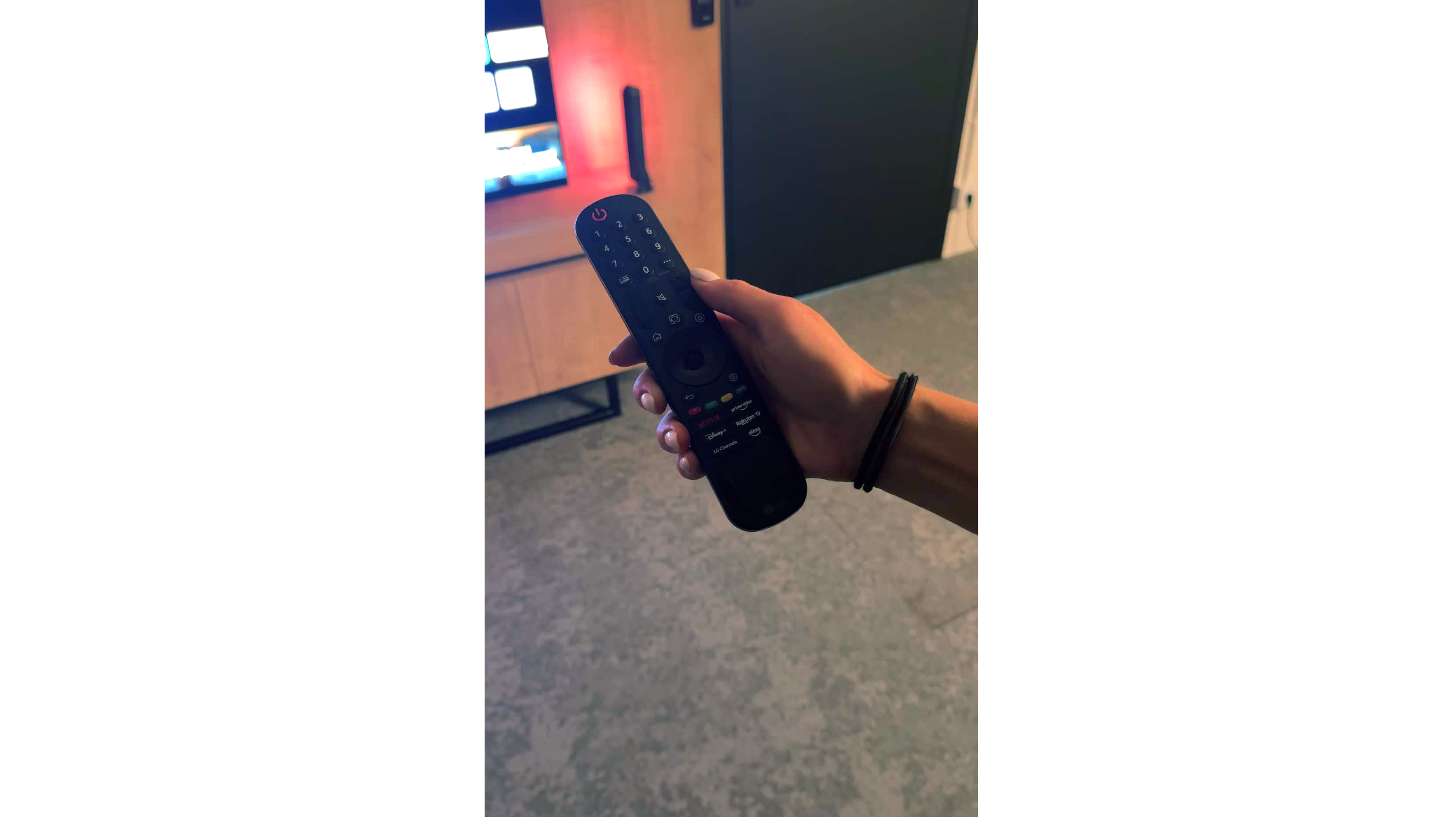
Panasonic Z95A introduces a new operating system, which we believe is a very good move compared to last year's MZ2000 model. The system is called Fire TV and was created by Amazon. It is a novelty in the Polish market, distinguished by its fluidity and responsiveness, providing convenient operation and quick performance in everyday use.
Despite numerous advantages, the system still has a few shortcomings. We won’t find some popular applications on it, such as SkyShowtime, as well as Polish streaming services like Player.pl or TVP VOD. Another drawback is the quality of the interface translation – many functions have been translated in a rather imprecise manner, giving the impression that the translation was done "on the fly". Some names are incomprehensible, especially for those who haven't previously encountered other televisions, which can complicate the use of the device.
In terms of user functions, Z95A performs very well. It includes options such as USB recording, support for the PiP (picture-in-picture) function, AirPlay, and Miracast. As a result, the television offers versatility and meets most of the demands of modern users, although the Fire TV system still requires refinement to fully compete with more established solutions on the market.
Classic features
LG G5 has a lot to offer when it comes to classic television features. Aside from the inability to watch two sources (PIP), the television handles everyday usage excellently. There are no issues connecting external Bluetooth devices, such as headphones, and the EPG interface is very clear and understandable – even for those who are not particularly tech-savvy.
Smart TV Features
The Smart TV in the G5 operates on the WebOS system – it is the heart and brain of the entire television. With the Magic remote, using the G5 is truly enjoyable. We control the cursor on the screen with wrist movements, which somewhat resembles using a mouse in the air. The system itself is highly developed and offers everything one could expect: AirPlay, screen mirroring, voice search, and voice commands – all of this works smoothly and without delays. Without a doubt, it is one of the best operating systems in televisions on the market.
Note:
During our tests, we had virtually nothing to complain about – perhaps with one exception: the confusion surrounding the remote. Depending on the market and the specific version of the model, you may encounter the new, minimalist Magic remote (without a numeric keypad) or the older version with a full set of buttons. We tested the G54LW model, which came with the new Magic remote, but it's hard to say how the situation looks in other variants. It may be a similar situation to the LG C5 series, where the addition of the remote also depends on the specific market.
Playing files from USB
3.1/10
9/10
Supported photo formats:
Maximum photo resolution:

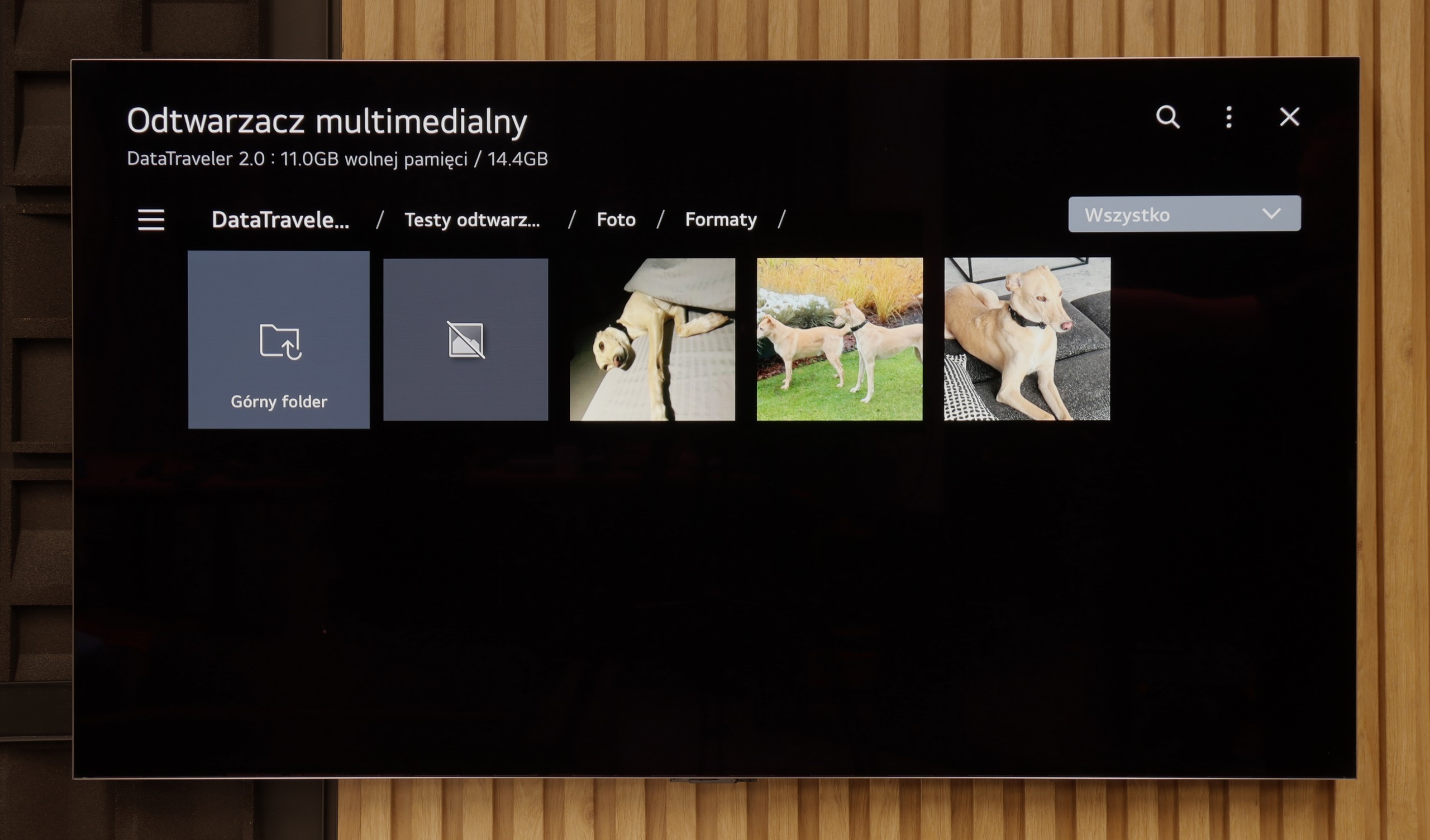
As we mentioned earlier, the Fire TV system in the Panasonic Z95A has some issues with support for the Polish language, which is unfortunately also noticeable when playing files from a USB drive. The built-in media player does not allow for the correct display of Polish characters, such as "ź", "ć" or "ł", which can be inconvenient for users relying on local subtitles for films. If the correct display of Polish characters is important to the user, it may be necessary to use an external application available in the Amazon store or to stream content through other devices.
The built-in media player in the LG G5 is really very good. It supports practically everything you might expect from a modern television – most popular formats work without any issues, and the app's performance is swift. Our only disappointment was the lack of support for very high bitrate HEVC 85 Mbit/s files – similar to the C5 and B5 models. Interestingly, the same file played flawlessly on last year's LG OLEDs, so it's hard to say what has caused this change. Nevertheless, in everyday use, the G5 will handle the vast majority of content without the need to connect any external devices for media playback.
Apps
6.1/10
9.1/10














































Sound
8.7/10
8.7/10
- Maximum volume--
- Dolby Digital Plus 7.1
- Dolby True HD 7.1
- Dolby Atmos in Dolby Digital Plus (JOC)
- Dolby Atmos in Dolby True HD
- DTS:X in DTS-HD MA
- DTS-HD Master Audio
The sound in Panasonic Z95A is one of its strong points, mainly thanks to the built-in soundbar, which provides impressive audio experiences. Dolby Atmos support makes the sound spatial and full of depth, perfectly fitting into the cinematic experience. Both dialogues and sound effects are clear and dynamic, which will satisfy even the most demanding users. Unfortunately, there is a lack of support for the DTS format, which may be disappointing for those using films or content that require it. Nevertheless, the overall sound quality in Z95A is at a very high level and successfully replaces external audio systems (at a reasonable price) in most home applications.
The sound on the LG G5, considering its slim profile, is truly phenomenal. When listening to music, one can feel a light, pleasant bass, and in films, the dialogue is clear and audible – it does not get lost even in dynamic scenes. Unfortunately, a certain disappointment is the lack of support for the DTS format, which LG used in its older models. It’s a shame, as many home cinema enthusiasts may feel this as a step backwards.


